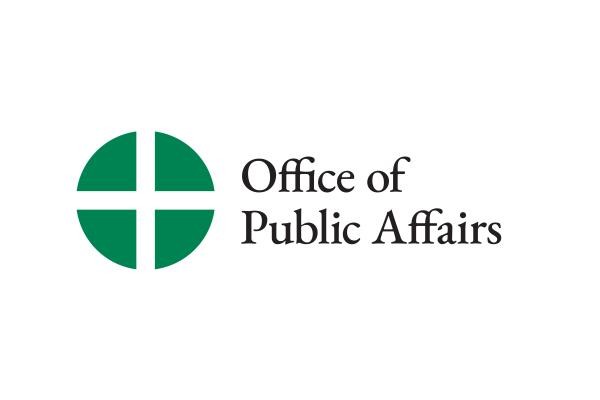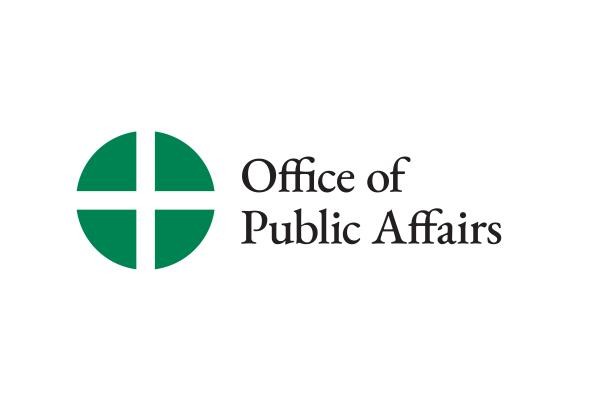Jewish-Catholic Dialogue Studies How Religious Identities Are Presented In Textbooks, Sees Need For Continued Revisions
WASHINGTON—Jewish and Catholic leaders agree that much work lies ahead in accurately presenting the religious identity and practices of each other’s communities in their respective religious education textbooks.
WASHINGTON—Jewish and Catholic leaders agree that much work lies ahead in accurately presenting the religious identity and practices of each other’s communities in their respective religious education textbooks.
“Much of today’s religious education in Jewish schools still focuses too closely on the mistreatment of Jews in the past,” said Rabbi Arnold Samler of the Jewish Education Project of New York City. “Even though Jewish religious schools are required by state law to teach about other religions, there are no consistent standards to help guide teachers in this important project,” he added.
Samler spoke at the semi-annual consultation of the U.S. Conference of Catholic Bishops (USCCB) and the National Council of Synagogues (NCS), December 5, 2011, at New York’s Jewish Theological Seminary. The consultation was co-chaired by Archbishop Wilton Gregory of Atlanta and Rabbi David Straus, Mail Line Reform Temple, Philadelphia. The topic for the meeting was “How Do We Teach about Each Other’s Faith Group in Our Religious Schools?”
Philip Cunningham, Ph.D., professor of theology and director of the Jewish-Catholic Institute at St. Joseph’s University in Philadelphia, stated in his presentation that, “Despite great strides made in this area by Catholics since the Second Vatican Council, there is still a dearth of Roman Catholic exegetical materials to assist teachers with a modern understanding of the Gospels that utilize the rich materials issued by the Pontifical Biblical Commission.”
Reports from other Jewish and Catholic dialogue members supported the findings of both Samler and Cunningham. Rabbi David Sandmel, Ph.D., of The Catholic Theological Union in Chicago urged that Catholic and Jewish teachers be brought together to develop interfaith projects and shape joint curricula. Father Dennis McManus, Ph.D., of Georgetown University stressed the need for an in-depth formation of Catholic religious education textbook editors, who often control the final expression that will shape the understanding of both students and teachers about Jews and Judaism. Rabbi Ruth Langer, Ph.D., of Boston College noted that the Solomon Schechter Jewish day schools, the Maimonides School of Boston and some yeshivot (Jewish religious schools) are now teaching about other religions in addition to Christianity. Rabbi Joel Meyers of the Rabbinical Assembly pointed out that sixth graders in Israeli schools are now required to learn about Christianity, Islam and other faiths.
Rabbi Gilbert Rosenthal summarized the concerns of both groups in stating, “We can learn much together by learning much from each other. Today, our religious textbooks need to let the voices of other believers tell us directly who they are and what they believe.”
Jewish and Catholic participants expressed hopes and concerns over developments in the so-called “Arab Spring,” which has unfolded since summer of 2011. All agreed that under no circumstances – whether directed against Christians, Jews or Muslims – could religion be used as a pretext for violence.
Archbishop Gregory concluded the meeting with a brief presentation on the language of the new English translation of the Mass. He said, “There should be no concern on the part of our Jewish brothers and sisters that the new English translation in any way diminishes the progress made in Catholic expression about Jews and Judaism in the reformed liturgy since the Second Vatican Council. On the contrary, the new translation seeks only to help clarify and deepen the liturgy for Catholics everywhere. Throughout the new translation, Jews remain ‘our beloved elder brothers and sisters,’ spoken of with respect and affection.”
Jewish participants at the consultation included Rabbi Lewis Eron, Cherry Hill, New Jersey; Rabbi Joel Meyers, executive vice-president emeritus of the (Conservative) Rabbinical Assembly; Rabbi Jonathan Waxman, Temple Beth Sholom, Smithtown, New York; Rabbi David Straus, Central Conference of American Rabbis; Rabbi Rosenthal, National Council of Synagogues; Rabbi Richard Hirsh, Reconstructionist Rabbinical Association; Rabbi Daniel F. Polish of La Grangeville, New York; Ruth Langer, Ph.D., of Boston College; Rabbi Harlod Berman, Congregation Tifereth Israel, Columbus, Ohio; Rabbi Shira Lander, Ph.D., Rice University, and Rabbi Sandmel.
Catholic participants at the consultation included Archbishop Gregory; Bishop Basil H. Losten, former bishop of Stamford for Ukrainians; Auxiliary Bishop Denis Madden of Baltimore; Christian Brother David Carroll, former associate director at Catholic Near East Welfare Association; Atonement Father James Loughran, Graymoor Ecumenical Institute; Msgr. Guy Massie, Ecumenical Office of the Diocese of Brooklyn, New York; Msgr. Robert Stern, former director of the Catholic Near East Welfare Association; Father Dennis McManus, USCCB consultant for Jewish Affairs, and Jesuit Father Drew Christiansen, America Magazine.
---
Keywords: Jewish-Catholic Dialogue, religious identity, school textbooks, USCCB, U.S. Conference of Catholic Bishops, Archbishop Wilton Gregory, National Council of Synagogues, Rabbi David Straus, Jewish Theological Seminary, New York
# # # # #
MEDIA CONTACT:Don ClemmerO: 202-541-3206M: 260-580-1137Email

